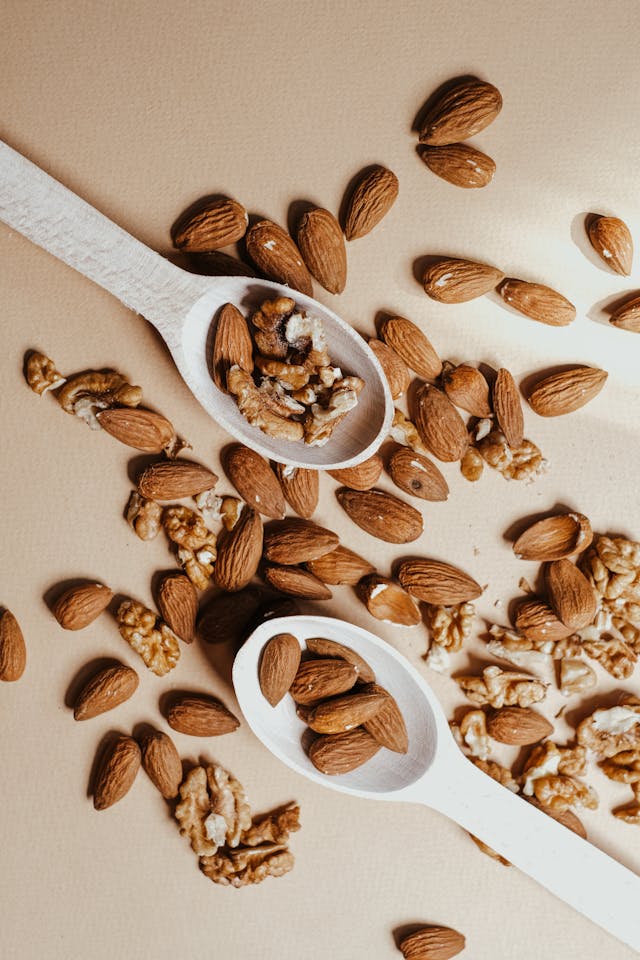
Good fats and bad fats are in all of our foods: learning the differences between them, and understanding how the body processes these ‘essential’ nutrients is fundamental to your healthy food planning.
Understanding Cholesterol: More Than a Heart Risk
Cholesterol is a word that most people recognise as meaning heart disease. This is true, in that cholesterol at high levels can create restrictions in the heart’s arteries, which may eventuate into a stroke or heart attack.
But, cholesterol is also an essential for our biological life. It builds and maintains cell membranes, regulates membrane fluidity, is a precursor molecule for many biochemical pathways, in the liver cholesterol is converted to bile which breaks down fats in the digestive tract, and, it’s also an important building block for the synthesis of vitamin D, steroidal hormones, cortisol, testosterone, and estrogen (whew!).
Eating a diet high in saturated fats (meat, eggs, dairy, etc.) and trans fats (some vegetable oils, margarine, prepackaged cakes, pastries, take-away food) increases the liver’s production of cholesterol. Since the body cannot break down cholesterol in the blood on its own, it relies on lipoproteins to transport it.
Good Fats vs. Bad Fats: What Your Body Really Needs
There are 2 main types of lipoproteins: Low Density Lipoproteins (LDL, known as bad fats) and High Density Lipoproteins (HDL, known as good fats).
High levels of LDL in the body can cause a buildup along artery walls. So, combined with other substances, this buildup forms a plaque-like deposit, leading to arteriosclerosis. The condition that can trigger a stroke or heart attack.
When the body is high in HDL, the arterial walls are clean and lovely. HDL’s move cholesterol from the arteries and back to the liver, where the cholesterol is converted to bile. Bile is like a dish-washing soap that breaks down fats. And it assists the intestinal absorption of fat molecules and fat soluble vitamins, such as Vitamins A, D, E and K.
These vitamins assist the various mechanisms for bone and organ development, blood viscosity, and the anti-oxidation of cells. As such, these are essential for healthy development.
We must eat Essential Fatty Acids, as our body requires them, yet cannot produce them on its own. Fish, shellfish, flaxseed oil, hemp oil, canola oil, leafy green vegetables, walnuts, sunflower and pumpkin seeds, acai berries, poultry, grains, and also avocados all contain EFAs. Aim to eat a wide variety of whole, fresh foods to ensure you get all the essential vitamins, minerals, and good fats your body needs.
Your diet will also benefit greatly with the consumption of cold water fish, such as sardines, herring, anchovy, and mackerel. These particular fish obtain their omega 3 fatty acids from algae. Some seaweeds also contain EFA’s, this is a great essential source for vegetarians.
Fuelling the Body: Balancing Fats, Carbs, and Energy
Triglycerides are stored body fat, think of body fat as coal in the coal-house. Ask yourself, do you burn your daily coal or keep storing it for that fire that will never burn big enough?
Foods high in fats are kind of obvious. Please be alert to take away foods, fried food, prepackaged cakes, biscuits, also pastries. Look at them as coal in the bucket of life, which is the fuel for your fire of fatty desire!
Diets high in carbohydrates may also increase body fat levels, just think of carbs as sugar. Before you take a bite of anything, ask yourself, how much energy do I exert during my working day?
Carbohydrates fuel brain function and muscular movement. But your exercise and activity levels determine how much energy you need each day. When carbs are not utilised by the body, they will be absorbed via insulin and stored as triglycerides. Yes, this is body fat. This is quite simply more coal in the coal-house.
So, chew the fats every day, as your body does in fact need them, and healthy carbs too. Read up on healthy food options, as we are living in a time of glorious abundance and knowledge. The choice is all yours for the tasting.
Jarod Chapman



